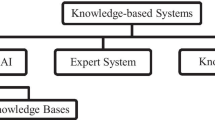Abstract
Purpose
Appropriate amount of liquid intake is crucial for maintaining human physiological operations. Traditionally, researchers have used self-reported questionnaires for estimating daily liquid intake, which has been proven to be unreliable. In this study, we developed an instrumented system for liquid intake monitoring to reduce estimation subjectivity by complementing self-reporting information with instrumented data.
Methods
Liquid intake can be detected by the way of detecting a person’s swallow events. The system works based on a key observation that a person’s otherwise continuous breathing process is interrupted by a short apnea when a swallow occurs as a part of the intake process. We detect the swallows via recognizing apneas extracted from breathing signal captured by a wearable sensor chest-belt. Such apnea detection is performed using matched filters and machine learning mechanisms with both time and frequency domain features. Spectrum analysis, artifact handling, and iterative template refinement were also proposed, analyzed and experimented with.
Results
It is demonstrated that the proposed matched filter method on an average can provide true positive rates up to 82.81% and false positive rates as low as 3.31%. It is also demonstrated that the machine learning method using Decision Tree (J48) provides the best true positive rates up to 97.5% and false positive rates as low as 0.7%.
Conclusions
The experiments and analysis suggest that the proposed liquid intake monitoring system and algorithms through breathing signal shows potential for being used for liquid intake monitoring.
Similar content being viewed by others
References
Warren JL, Bacon WE, Harris T, McBean AM, Foley DJ, Phillips C. The burden and outcomes associated with dehydration among US elderly, 1991. Am J Public Health. 1994; 84(8): 1265–9.
Bar-Or O. The young athlete: Some physiological considerations. J Sports Sci. 1995; 13(suppl 1):S31–3.
Vance VA, Woodruff SJ, McCargar LJ, Husted J, Hanning RM. Self-reported dietary energy intake of normal weight, overweight and obese adolescents. Public Health Nutr. 2009; 12(2):222–7.
Schoeller DA. Limitations in the assessment of dietary energy intake by self-report. Metabolism. 1995; 44(2 suppl 2):18–22.
Samuel-Hodge CD, Fernandez LM, Henríquez-Roldán CF, Johnston LF, Keyserling TC. A comparison of self-reported energy intake with total energy expenditure estimated by accelerometer and basal metabolic rate in African-American women with type 2 diabetes. Diabetes Care. 2004; 27(3):663–9.
Amft O, Troster G. Methods for detection and classification of normal swallowing from muscle activation and sound. Conf Proc Pervasive Health Conference and Workshops. 2006; 1–10.
McKeown MJ, Torpey DC, Gehm WC. Non-invasive monitoring of functionally distinct muscle activations during swallowing. Clin Neurophysiol. 2002; 113(3):354–66.
Passler S, Fischer W-J. Food intake activity detection using a wearable microphone system. Conf Proc Intell Environ. 2011; 1:298–301.
Walker WP, Bhatia D. Towards automated ingestion detection: swallow sounds. Conf Proc IEEE Eng Med Biol Soc. 2011; 1:7075–8.
Sazonov E, Schuckers S, Lopez-Meyer P, Makeyev O, Sazonova N, Melanson EL, Neuman M. Non-invasive monitoring of chewing and swallowing for objective quantification of ingestive behavior. Physiol Meas. 2008; 29(5):525–41.
Nagae M, Suzuki K. A neck mounted interface for sensing the swallowing activity based on swallowing sound. Conf Proc IEEE Eng Med Biol Soc. 2011; 1:5224–7.
Makeyev O, Lopez-Meyer P, Schuckers S, Besio W, Sazonov E. Automatic food intake detection based on swallowing sounds. Biomed Signal Process Control. 2012; 7(6):649–56.
Dong B, Biswas S. Swallow monitoring through apnea detection in breathing signal. Conf Proc IEEE Eng Med Biol Soc. 2012; 1:6341–4.
Kandori A, Yamamoto T, Sano Y, Oonuma M, Miyashita T, Murata M, Sakoda S. Simple magnetic swallowing detection system. IEEE Sens J. 2012; 12(4):805–11.
Damouras S, Sejdic E, Steele CM, Chau T. An online swallow detection algorithm based on the quadratic variation of dual-axis accelerometry. IEEE T Signal Process. 2010; 58(6):3352–9.
Danbolt C, Hult P, Grahn LT, Ask P. Validation and characterization of the computerized laryngeal analyzer (CLA) technique. Dysphagia. 1999; 14(4):191–5.
Moreau-Gaudry A, Sabil A, Benchetrit G, Franco A. Use of respiratory inductance plethysmography for the detection of swallowing in the elderly. Dysphagia. 2005; 20(4):297–302.
Dantas RO, Kern MK, Massey BT, Dodds WJ, Kahrilas PJ, Brasseur JG, Cook IJ, Lang IM. Effect of swallowed bolus variables on oral and pharyngeal phases of swallowing. Am J Physiol. 1990; 258(5):G675–81.
TinyOS Home Page. http://www.tinyos.net/. Accessed 12-Sep-2014.
Gautschi G. Piezoelectric Sensorics: Force, Strain, Pressure, Acceleration and Acoustic Emission Sensors, Materials and Amplifiers. 1st ed. New York: Springer; 20–2.
Kozlowski SWJ, Chao GT. The dynamics of emergence: Cognition and cohesion in work teams. Manage Decis Econ. 2012; 33(5–6):335–54.
Dong B, Biswas S. Wearable networked sensing for human mobility and activity analytics: A systems study. Conf Proc Commun Syst Netw. 2012; 1–6.
Turin G. An introduction to matched filters. IRE T Inform Theor. 1960; 6(3):311–29.
Hall M, Frank E, Holmes G, Pfahringer B, Reutemann P, Witten IH. The WEKA data mining software: an update. ACM SIGKDD Explor Newsl. 2009; 11(1):10–8.
Duda RO, Hart PE, Stork DG. Pattern Classification. 2nd ed. New York: Wiley; 20–0.
Oppenheim AV, Schafer RW. Discrete-Time Signal Processing 3rd ed. New Jersey: Prentice Hall; 20–9.
Crary MA, Carnaby GD, Sia I, Khanna A, Waters MF. Spontaneous swallowing frequency has potential to identify dysphagia in acute stroke. Stroke. 2013; 44(12):3452–7.
Pehlivan M, Yüceyar N, Ertekin C, Çelebi G, Erta M, Kalayci T, Aydoğdu I. An electronic device measuring the frequency of spontaneous swallowing: Digital phagometer. Dysphagia. 1996; 11(4):259–64.
Hall MA, Holmes G. Benchmarking attribute selection techniques for discrete class data mining. IEEE T Knowl Data Eng. 2003; 15(6):1437–47.
Author information
Authors and Affiliations
Corresponding author
Rights and permissions
About this article
Cite this article
Dong, B., Biswas, S. Wearable sensing for liquid intake monitoring via apnea detection in breathing signals. Biomed. Eng. Lett. 4, 378–387 (2014). https://doi.org/10.1007/s13534-014-0149-8
Received:
Revised:
Accepted:
Published:
Issue Date:
DOI: https://doi.org/10.1007/s13534-014-0149-8




